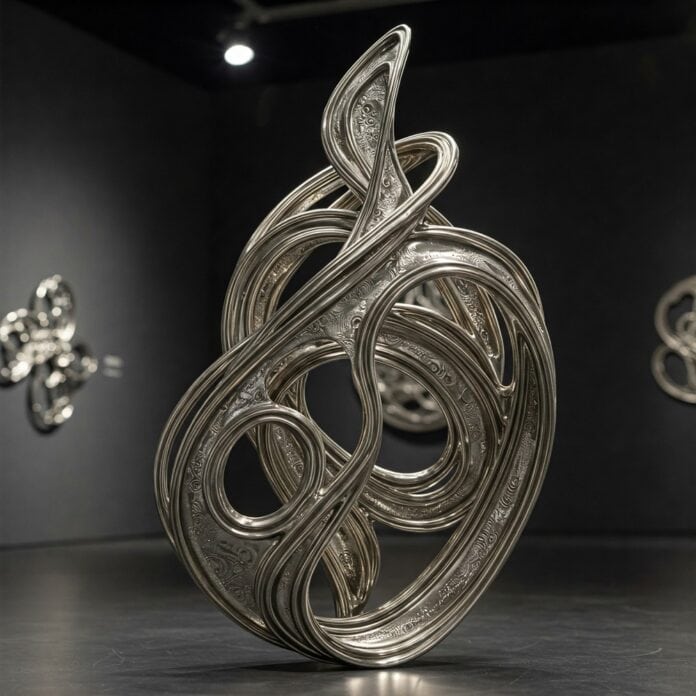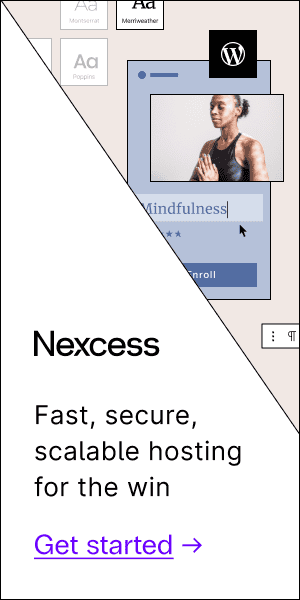The DXF file format has become a pivotal force in the world of metal craftsmanship, bridging the gap between imaginative design and tangible creation. A cornerstone of computer-aided design (CAD), DXF files enable craftsmen and manufacturers to harness the precision of laser and plasma cutting technologies.
These tools transform raw metal into functional components and stunning embellishments that enhance home interiors and outdoor landscapes. This article explores the unique capabilities of DXF files, their integration with cutting-edge fabrication methods, and their role in creating metal pieces that enhance everyday spaces.
Decoding the DXF File
The DXF file, or Drawing Exchange Format, was created by Autodesk in 1982 to standardize the transfer of design data across software platforms. It encapsulates complex vector-based graphics, defining shapes by precise mathematical coordinates.
This accuracy makes DXF files indispensable to computer numerical control (CNC) systems, which rely on them to guide cutting tools with pinpoint accuracy. Compatible with programs such as AutoCAD, SketchUp, and open-source alternatives such as QCAD, DXF files are a universal medium for turning ideas into reality.
What sets DXF files apart is their ability to maintain design fidelity. By encoding every curve and angle with precise measurements, they ensure that the final product is perfectly aligned with the creator’s vision, whether it’s a structural beam or a delicate garden ornament. This reliability is especially critical in metalworking, where precision dictates both performance and aesthetics.
The Dynamic Duo: Laser and Plasma Cutting
Laser and plasma cutting are transformative technologies that bring DXF designs to life. Each offers distinct advantages that make them ideal for different facets of metal fabrication, from industrial production to artistic expression.
Laser Cutting: The pinnacle of precision
Laser cutting uses a focused beam of light to slice through metal with remarkable accuracy, often achieving tolerances as fine as ±0.08 mm, as defined by the International Electrotechnical Commission (IEC).
This method is ideal for thinner materials (up to 22 mm for carbon steel) and metals such as aluminum, copper, and bronze. Its precision makes it possible to create intricate patterns and fine details that cannot be achieved with traditional methods.
The process begins with a DXF file that is uploaded to the laser cutter’s control software. The file’s vector data guides the laser along precise paths, producing smooth, polished edges with minimal thermal distortion. This makes laser cutting a preferred choice for decorative applications where appearance is paramount.
Plasma Cutting: Robust and reliable
Plasma cutting uses a high-energy beam of ionized gas to cut through conductive metals such as steel, brass, and titanium. It excels with thicker materials (up to 45 mm) and is faster than laser cutting for heavy-duty tasks. While its tolerances hover around ±0.4 mm, modern CNC plasma systems have narrowed the gap, offering improved accuracy for both functional and decorative projects.
DXF files are the backbone of plasma cutting, ensuring that the torch follows consistent paths across large sheets of metal. This reliability is critical for producing uniform components or bold outdoor features.
Crafting Beauty and Utility with DXF Files
The synergy of DXF files and advanced cutting technologies has unlocked a vast array of possibilities. From industrial applications to personalized décor, these tools are redefining how metal is used in our lives.
Industrial and architectural marvels
- Precision components: DXF files facilitate the creation of critical parts such as sprockets, flanges, and chassis for industries such as construction and robotics. Laser cutting ensures tight tolerances, while plasma cutting handles thicker, structural elements.
- Structural Design: Metal framing, balustrades, and cladding panels benefit from DXF-driven fabrication. Plasma cutting tackles rugged structural pieces, while laser cutting adds intricate detail.
- Branding Solutions: Laser-cut metal signs with custom logos or typography provide businesses with durable, professional displays. DXF files allow for custom designs that stand out.
Elevating home interiors
The precision of laser cutting from DXF files has revolutionized interior design, offering homeowners unique, durable decorative options that combine artistry with practicality.
- Wall Ornaments: Laser-cut metal panels featuring abstract shapes, cultural symbols, or natural scenes are growing in popularity. A 2024 IBISWorld report predicts that the global home furnishings market will reach $150 billion by 2029, with metal finishes carving out a significant niche for their modern appeal.
- Furniture Decor: DXF-designed metal accents, such as chair frames or table supports, add an industrial-chic vibe to furniture. Intricate cutouts, such as lattice or wave patterns, add visual interest.
- Lighting Innovations: Laser-cut metal chandeliers or sconces create stunning lighting effects. DXF files allow for custom designs, from angular grids to flowing organic shapes.
- Room Dividers: Decorative metal screens, laser-cut with geometric or themed designs, serve as stylish partitions in open-plan homes and double as art installations.
Enrich outdoor environments
Metal creations created from DXF files transform gardens and patios, combining durability with aesthetic appeal. Protective coatings such as galvanizing ensure longevity in harsh weather conditions.
- Garden Art: Laser-cut metal sculptures, such as stylized animals or minimalist shapes, add character to outdoor spaces. A 2024 Garden Trends report found that 38% of homeowners prioritize durable decor, with metal art leading the way.
- Functional Structures: Plasma-cut planters, pergolas, and trellises provide sturdy support for greenery. DXF files allow for custom configurations, such as octagonal planters or arched leaf trellises.
- Custom Entrances: Laser-cut gates with personalized designs, such as monograms or landscapes, enhance property aesthetics while providing security.
- Patio Features: Plasma-cut fire pits with intricate cutouts, such as star patterns or wildlife silhouettes, serve as functional centerpieces for outdoor gatherings.
From vision to victory: The Fabrication Process
Creating a metal masterpiece from a DXF file involves a series of carefully orchestrated steps:
- Conceptual Design: Designers use CAD software to create a 2D blueprint that is saved as a DXF file. The design must take into account material thickness, cutting technology, and kerf to ensure feasibility.
- File refinement: The DXF file is imported into the CNC machine’s software, where it’s optimized for cutting. Strategies such as part nesting can reduce material waste by up to 18%, according to a 2024 study by the Global Manufacturing Alliance.
- Cutting Execution: The laser or plasma cutter follows the instructions in the DXF file to shape the metal. Laser cutting is ideal for detailed work, while plasma cutting can handle larger, thicker projects.
- Finishing Processes: Post-cutting steps such as grinding, coating, or anodizing enhance the durability and appearance of the product.
- Assembly and Integration: Complex items such as sculptures or furniture are assembled using techniques such as welding or fastening.
Why DXF Files Shine
DXF files are the lynchpin of metal fabrication for several compelling reasons:
- Uncompromising accuracy: They ensure that designs are executed with the precision that is critical to both form and function.
- Broad Compatibility: Supported by virtually all CAD and CNC platforms, DXF files are a global standard.
- Scalable Production: A single file can drive small or large runs while maintaining consistency.
- Creative freedom: Designers can easily modify DXF files to create custom pieces tailored to specific needs.
Expert voices and market momentum
Industry leaders underscore the transformative impact of DXF files. “The precision and accessibility of DXF files have democratized metal fabrication, allowing creators at all levels to produce stunning work,” says Elena Martinez, a CNC technology expert with 18 years in the field. “Laser cutting, in particular, has put high-end decor within reach of the average consumer.”
Market trends reflect this shift. The global CNC machine market is expected to reach $23 billion by 2031, according to a 2024 Research and Markets report, with laser and plasma cutting leading the way. The decor industry is also thriving, with platforms like eBay reporting a 30% increase in custom metal decor sales by 2024, much of it driven by DXF-based designs.
Overcoming hurdles
While DXF files and CNC cutting offer immense potential, challenges remain:
- Design Expertise: Creating effective DXF files requires proficiency with CAD tools and an understanding of manufacturing limitations. Mistakes can lead to costly missteps.
- Material costs: Metals such as bronze and stainless steel are expensive, with costs rising 12% in 2024, according to the International Metal Index.
- Technology constraints: Designs must be tailored to the specific cutting method, as not all patterns are suitable for both laser and plasma systems.
Conclusion
The DXF file format is a catalyst for creativity and precision in metal fabrication, enabling laser and plasma cutting machines to produce everything from industrial essentials to stunning home and garden decor. Its accuracy, versatility, and adaptability make it an invaluable asset for craftsmen and manufacturers alike. As the appetite for custom, resilient metal creations grows, DXF files will continue to shape the future of craftsmanship, turning visions into lasting works of art.







